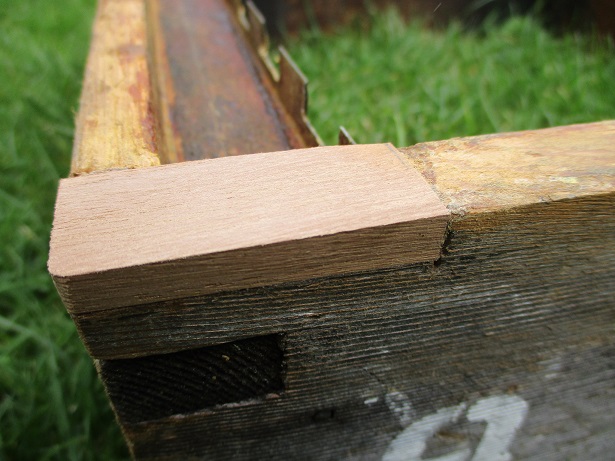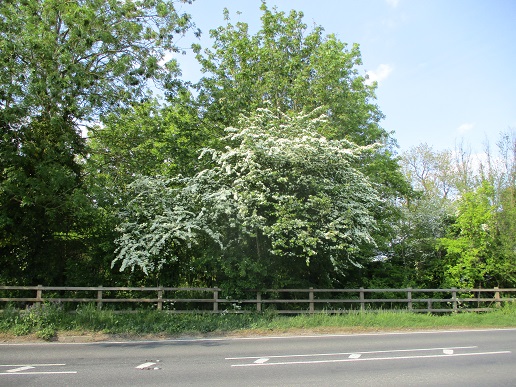The wasps came out in force in August. I dispatched one nest but couldn't find the others. It got so bad that hive 7 just gave up defending. The wasps know which hive to target. I fitted a home-made conduit entrance which had the bees puzzled for about 1-2 hours and then wasps gave up and bees found their 2 new entrances. This is a very successful method of stopping wasp predation so I’ll maybe make a few more. I make no claim to originality as I saw these on a retailers web site and realised the simplicity of manufacture; especially as I had lengths of the plastic trunking already in the workshop
Having been successful with the wasp problem I replaced the original entrance block. Two days later and they were being robbed by bees. These could have come from my own hives or from the known feral colonies in the houses opposite. I resorted to an entrance-block change again but this time it was the single-bee size. Poor hive 7 just don’t know how to defend themselves.
The bad news continued when I discovered sac brood and chronic bald brood in three colonies. A chat with an ex seasonal inspector and I decided to isolate the hives for the time being. One managed to clear itself successfully after judicious use of tweezers to remove the sac brood larvae. The other two remain in the corner of the apiary waiting to see if they survive the winter.
Harvest-wise, my dire predictions were proved unfounded. The borage came on flower late and the Debden Green colonies started foraging keenly. Not only that, but as the bee flies it made the Debden Green fields with flying distance of the home apiary. Much of what they foraged was used up in flight but they were definitely bringing it home. On top of this, the lateness of flowering and the weather meant that the farmer postponed the swathing until late August giving the bees another bonus. This all managed to redress the balance and I had one of my best years ever
As the bees have cleaned-down the supers, several supers have gone via the workshop. Over the years, the supers I made at Ted Hoopers woodwork evenings, not to mention the old ‘Taylor’s of Welwyn’ supers, have gradually had their corners worn away until they are prone to wasp intrusion. I have rebated the offending corners and inserted hardwood slips to extend their lives.






